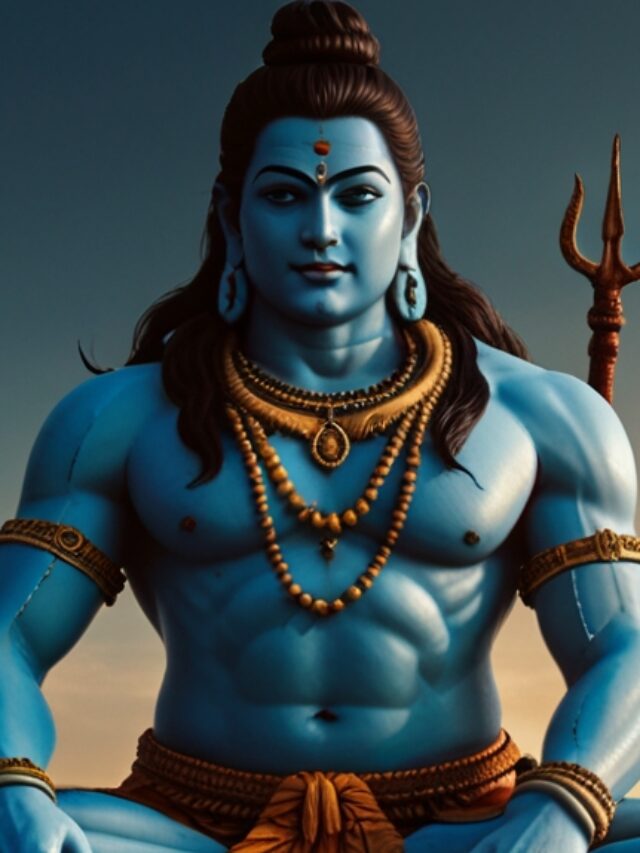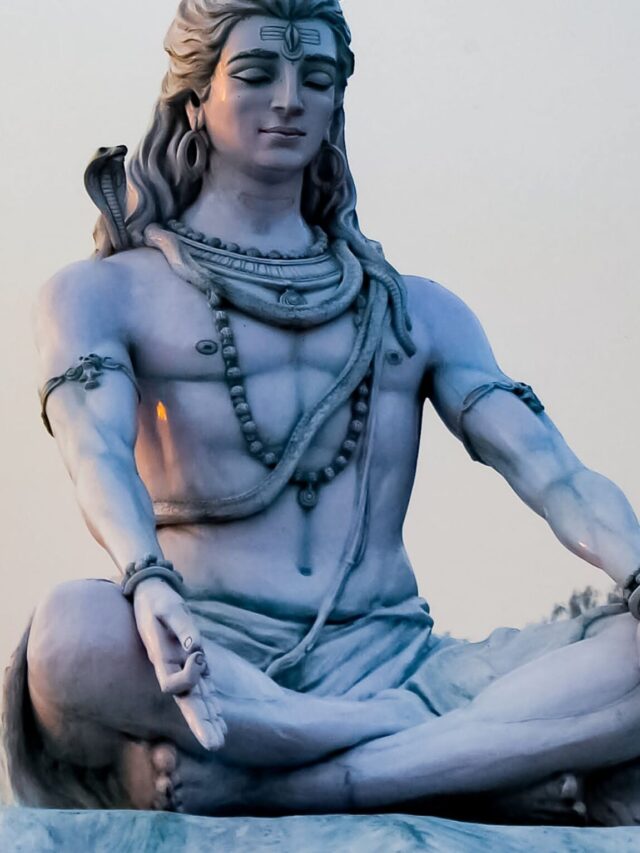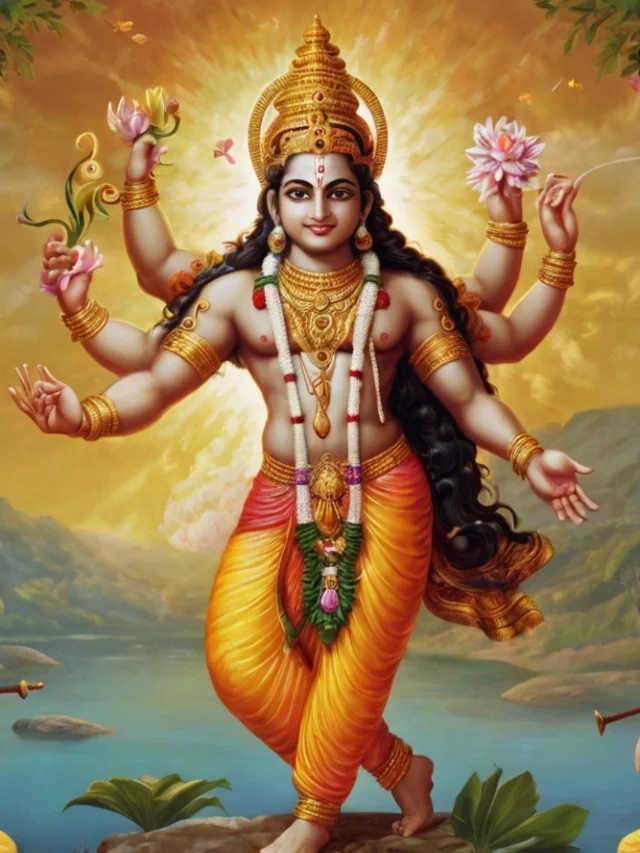In the epic Ramayana, the birth of Luv and Kush is a significant and poignant event that intertwines divine prophecy, maternal sacrifice, and the destiny of heroes. This narrative unfolds against the backdrop of Sita’s second exile and her maternal seclusion in the forest, where she raises her twin sons amidst trials and challenges.
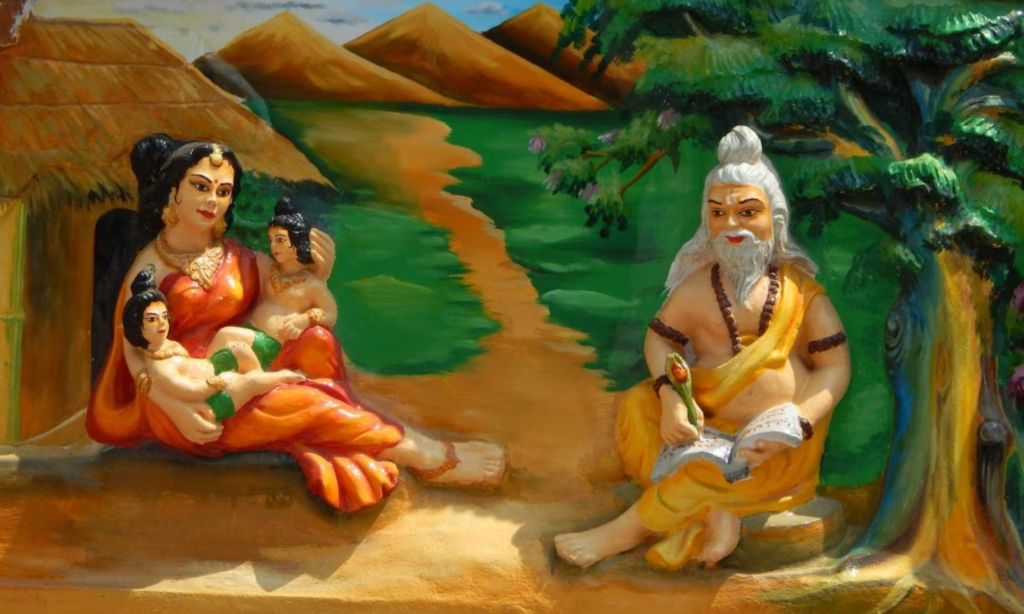
Birth of Luv and Kush
The story of the birth of Luv and Kush, the twin sons of Lord Rama and Sita, is an enchanting narrative from the Indian epic, the Ramayana. This tale highlights themes of divine destiny, familial bonds, and the eventual reunion of the Ramayana’s principal characters.
The Context
After the return of Lord Rama to Ayodhya and his coronation as king, a new chapter begins with Sita’s pregnancy. Despite the happy occasion, doubts about Sita’s chastity arise among the citizens of Ayodhya due to her abduction by Ravana, the demon king. To uphold his duty as king and maintain his people’s trust, Rama reluctantly decides to exile his pregnant wife.
Sita’s Exile and the Hermitage
Sita is sent to the forest, where she finds refuge in the ashram (hermitage) of sage Valmiki. Valmiki, the author of the Ramayana, offers her shelter and protection. It is in this tranquil setting that Sita gives birth to twin sons, Luv and Kush.
Birth and Early Life of Luv and Kush
Luv and Kush are born and raised in Valmiki’s ashram, surrounded by nature and the wisdom of the sage. They grow up learning the Vedas, scriptures, and the art of warfare. Despite being born into royalty, their upbringing in the hermitage instills in them humility, wisdom, and strength.
Valmiki’s Role
Valmiki plays a crucial role in the early lives of Luv and Kush. As their guru, he educates them in various disciplines, including the Ramayana itself, the story of their father’s life and exploits. The boys grow up unaware of their true lineage, but their education and training make them formidable warriors and virtuous individuals.
The Encounter with Rama
The significant turn in their story occurs during the Ashwamedha Yajna, a horse sacrifice ritual performed by Rama to assert his sovereignty. The sacrificial horse wanders into the forest near Valmiki’s ashram, where Luv and Kush, unaware of its significance, capture it.
When Rama’s army, including his brothers Lakshmana, Bharata, and Shatrughna, arrives to retrieve the horse, Luv and Kush bravely confront and defeat them in battle. Impressed by their prowess, Rama himself comes to confront the twins. However, before any further conflict, Valmiki intervenes and reveals the true identities of Luv and Kush as Rama’s sons.
Reunion and Conclusion
The revelation brings about a poignant reunion. Rama, overwhelmed with joy and sorrow, embraces his sons. This reunion eventually leads to Sita’s return to Ayodhya, although in some versions of the Ramayana, it is said that Sita, after proving her purity once more, chooses to return to the Earth, her mother, rather than rejoin Rama.
Symbolism and Themes
The birth and story of Luv and Kush are rich with symbolic meanings:
- Dharma and Duty: The narrative explores the complex interplay between personal happiness and societal duty, as seen in Rama’s painful decision to exile Sita.
- Strength and Virtue: Luv and Kush embody the virtues of courage, wisdom, and righteousness, highlighting the importance of upbringing and education.
- Reunion and Forgiveness: The eventual reunion underscores themes of forgiveness, acceptance, and the enduring bonds of family.
Cultural Impact
The story of Luv and Kush has been retold and celebrated in various forms, including literature, theater, and television. Their tale adds depth to the Ramayana, showcasing the enduring legacy of Rama and Sita through their virtuous offspring.
Conclusion
The birth and story of Luv and Kush enrich the epic narrative of the Ramayana, offering lessons in duty, virtue, and the strength of familial bonds. Their lives, guided by the wisdom of Valmiki and the legacy of their divine parents, continue to inspire and teach valuable lessons to devotees and readers alike.
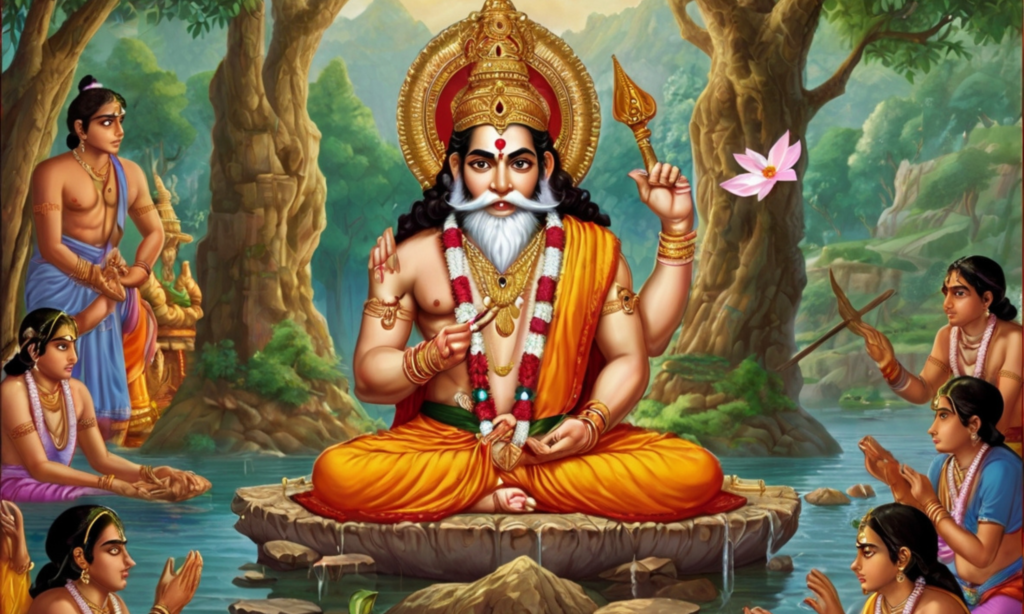
The story of Kush’s birth from grass
The story of Kush’s birth from grass is a fascinating and symbolic tale in Hindu mythology, illustrating the divine intervention and the mystical powers of Sage Valmiki.
The Context
Sita, wife of Lord Rama and mother of Luv, was living in Sage Valmiki’s hermitage during her exile. One day, she left her son Luv in the care of Valmiki while she went into the forest to gather wood and flowers. Despite his young age, Luv was adventurous and managed to slip away into the forest.
Valmiki’s Concern
When Valmiki realized that Luv was missing, he was deeply concerned. He knew that Sita, already burdened with sorrow and hardship, would be devastated by the loss of her son. Valmiki, with his deep compassion and mystical abilities, decided to create a solution that would prevent Sita from experiencing more grief.
Creation of Kush
Using his divine powers, Valmiki took a handful of sacred grass (known as “Kusha” in Sanskrit) that grew abundantly in his ashram. With intense concentration and his spiritual prowess, he transformed the grass into a boy who looked exactly like Luv. This newly created child was named Kush, derived from the grass used in his creation, symbolizing purity and sacredness.
Sita’s Return
When Sita returned from the forest, she found Kush, who was indistinguishable from Luv, waiting for her. She accepted him as her son without any suspicion. Valmiki, relieved that he had averted Sita’s immediate sorrow, continued his search for Luv.
The Reunion
Eventually, Luv was found and brought back to the ashram. Valmiki then revealed to Sita the truth about Kush’s miraculous birth. He explained how Kush was created from sacred grass to stand in for Luv while he was missing. Valmiki urged Sita to consider both boys as her sons and not to abandon Kush, who had been a loyal companion to her in Luv’s absence.
Sita’s Acceptance
Moved by Valmiki’s wisdom and the divine nature of Kush’s birth, Sita embraced both Luv and Kush as her sons. Thus, she became the mother of twins, each with a unique origin but equal in her love and care.
Symbolism
The birth of Kush from grass carries deep symbolic meaning:
- Divine Intervention: The story highlights the role of divine intervention in alleviating human suffering and ensuring the well-being of the righteous.
- Symbol of Purity: Grass, particularly the Kusha grass, is considered sacred and pure in Hindu rituals. Kush’s creation from grass underscores his purity and divine origin.
- Unity and Acceptance: The tale emphasizes themes of acceptance and unity, as Sita readily accepts Kush as her son despite his unusual origin.
Conclusion
The story of Kush’s birth from grass is a testament to the extraordinary events and divine miracles that permeate Hindu mythology. It showcases the profound compassion of Sage Valmiki, the mystical aspects of the natural world, and the unwavering maternal love of Sita. This tale adds a layer of richness and wonder to the larger narrative of the Ramayana, illustrating the depth and complexity of its characters and themes.
Ashwamedha Yajna
he Ashwamedha Yajna performed by Lord Rama in the Ramayana is a significant event that underscores his role as a just and powerful ruler, seeking to reaffirm his sovereignty and divine favor. This grand Vedic ritual, detailed in the Uttarakanda, the concluding part of the Ramayana, involves a series of intricate ceremonies and symbolic acts, demonstrating Rama’s commitment to dharma and the welfare of his kingdom.
Background and Motivation
After defeating Ravana and establishing peace in Ayodhya, Lord Rama begins his reign as a wise and benevolent king. However, his decision to exile Sita, based on societal doubts about her chastity despite her trial by fire, leaves him with lingering sorrow and a desire to reassert his commitment to dharma and righteousness. To solidify his rule and seek divine blessings for the prosperity of his kingdom, Rama decides to perform the Ashwamedha Yajna.
Preparations for the Yajna
The preparations for the Ashwamedha Yajna are extensive and meticulously planned. Sage Vasishtha, the royal priest, oversees the ritual, ensuring that every aspect is performed according to Vedic injunctions. A perfect, unblemished horse is selected and consecrated, symbolizing purity and royal power. The horse is adorned with golden ornaments and a declaration of Rama’s intent is attached to it.
Release of the Horse
The consecrated horse is set free to wander freely across the land for one year, accompanied by Rama’s loyal warriors and commanders, including his brothers and trusted allies. The horse’s journey signifies the king’s sovereignty over any territory it crosses. If any ruler challenges or captures the horse, Rama’s forces must defend its freedom, thereby asserting his dominance.
Challenges and Confrontations
As the horse roams, it inevitably encounters various rulers. Some accept Rama’s supremacy peacefully, while others challenge it, leading to battles. The most notable confrontation occurs when the horse enters the forest near the hermitage of Sage Valmiki, where Rama’s sons, Luv and Kush, are being raised by Sita.
The Encounter with Luv and Kush
Unaware of their royal lineage, Luv and Kush capture the sacrificial horse, leading to a significant conflict. When Rama’s army arrives to retrieve the horse, the twins display extraordinary valor and skill in battle, defeating the seasoned warriors. Rama’s brothers, Lakshmana, Bharata, and Shatrughna, are also defeated by the young warriors, prompting Rama himself to intervene.
Revelation and Reunion
Before a potentially tragic confrontation, Sage Valmiki intervenes and reveals the true identities of Luv and Kush to both Rama and the twins. The emotional reunion between Rama and his sons is a poignant moment in the epic, highlighting themes of familial bonds and divine destiny. Valmiki narrates the events leading to their birth and upbringing, and Sita is summoned to the court to reunite with Rama.
Completion of the Yajna
With the horse’s journey completed and the family reunited, the final sacrificial rites of the Ashwamedha Yajna are performed. The horse is bathed, adorned, and ritually sacrificed, symbolizing the ultimate offering by the king to uphold dharma and ensure the prosperity of his realm. The yajna concludes with grand feasts, donations to the poor, and ceremonies to honor the gods, ancestors, and sages, seeking their blessings for peace and stability in the kingdom.
Significance of the Ashwamedha Yajna in the Ramayana
The Ashwamedha Yajna in the Ramayana serves several key purposes:
- Affirmation of Sovereignty: It reaffirms Rama’s rule over his kingdom and beyond, demonstrating his power and authority.
- Divine Approval: The successful completion of the yajna signifies divine approval of Rama’s reign and actions.
- Reunion and Resolution: The event leads to the reunion with his sons, Luv and Kush, resolving the familial and emotional turmoil stemming from Sita’s exile.
- Symbol of Dharma: The yajna embodies Rama’s unwavering commitment to dharma, even when faced with personal and moral dilemmas.
Conclusion
The Ashwamedha Yajna performed by Lord Rama is a profound and symbolic event that highlights his role as an ideal ruler committed to upholding righteousness and ensuring the well-being of his people. It underscores the themes of divine intervention, familial bonds, and the pursuit of dharma that are central to the Ramayana, leaving a lasting legacy of Rama’s exemplary reign.
The singing incident of Luv and Kush in the Ramayana
The singing incident of Luv and Kush in the Ramayana is a pivotal moment that showcases the twins’ exceptional talent, captures the attention of Lord Rama, and leads to the eventual reunion of the family.
Context
After capturing the sacrificial horse during Lord Rama’s Ashwamedha Yajna (horse sacrifice), Luv and Kush are brought before Rama’s court. Unbeknownst to Rama, they are his own sons, raised in Sage Valmiki’s ashram and trained in the scriptures and arts, including music.
The Singing Competition
In the court, Luv and Kush are asked to demonstrate their skills. They choose to sing the epic Ramayana composed by their guru, Sage Valmiki. Their melodious voices and the poignant verses of the Ramayana captivate everyone present, including Rama and his brothers.
Recognition
As Luv and Kush sing, their song touches Rama deeply. The verses narrate the trials and tribulations of Sita, her unwavering love for Rama, her steadfastness during captivity in Lanka, and her sacrifice for the sake of dharma. The emotional impact of the song becomes evident as it not only moves the listeners but also stirs memories and emotions within Rama himself.
Reunion
As the song progresses, Rama begins to recognize the similarities between the events described and his own past. The realization dawns upon him that Luv and Kush are his own sons, and Sita’s whereabouts are revealed to him. This revelation brings both joy and sorrow to Rama, as he learns about his sons and regrets the years of separation from Sita.
Resolution
The singing incident leads to a resolution of the misunderstandings and separations that had plagued Rama and Sita’s family. It sets the stage for Rama’s reunion with Sita and the acceptance of Luv and Kush as his sons. The event also reaffirms the power of music and storytelling to convey deep emotions and truths, bridging the gap between past actions and present understanding.
Symbolism
The singing incident symbolizes:
- Talent and Devotion: Luv and Kush’s mastery of music reflects their devotion to their guru, Sage Valmiki, and their commitment to preserving and sharing the epic of Ramayana.
- Emotional Reconciliation: The power of music to evoke emotions and memories helps Rama reconcile with his past and reunite with his family.
- Divine Intervention: The incident highlights how fate and divine will bring about the reunion of loved ones and resolve conflicts.
Cultural Impact
The singing incident of Luv and Kush is celebrated in Hindu culture and has been depicted in various adaptations of the Ramayana through music, dance, and theater. It underscores the enduring appeal of the Ramayana’s narrative and its ability to inspire devotion and emotional connection among devotees.
Conclusion
The singing incident of Luv and Kush in the Ramayana is a poignant episode that demonstrates the power of music to bridge gaps, evoke emotions, and bring about reconciliation. It marks a turning point in the epic, leading to the reunion of Rama with his sons and the resolution of long-standing familial conflicts, ultimately reaffirming the themes of love, sacrifice, and dharma central to the Ramayana.

